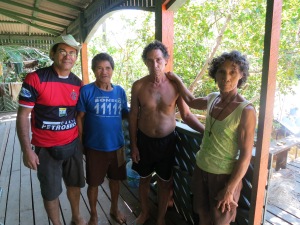From warmer temperatures to natural disasters such as flooding and drought, changing patterns of climate are having billion-dollar impacts on our food-growing systems. But scientists are struggling to find ways to measure and predict what may happen in the future—and to translate that into policies to help feed a bulging world population.
“Agricultural risks are growing, including climate change,” said Cynthia Rosenzweig of the NASA Goddard Institute for Space Studies, an Earth Institute affiliate. “At the same time, a consistent approach is needed to enable the agricultural sector to analyze these issues.”
She spoke Friday at a panel on food security at the annual meeting of the American Association for the Advancement of Science in Boston. Also on the panel were Thomas R. Karl of the National Oceanic And Atmospheric Administration’s National Climatic Data Center, Paul R. Ehrlich of Stanford University, and Felix Kogan of NOAA.

Cynthia Rosenzweig of the Goddard Institute for Space Studies and Paul R. Ehrlich from Stanford University answer questions at a panel on climate and food security held at the 2013 annual meeting of the American Association for the Advancement of Science.
Rosenzweig detailed a new effort to mesh climate science, agricultural expertise and economics to help make better forecasts, titled the Agricultural Model Intercomparison and Improvement Project—“AgMIP.” The multi-disciplinary effort involves scientists, economists and food experts on five continents.
“What’s been done over past decades is a whole cornucopia,” she said. “It’s hard to compare studies, and it’s hard to understand what all the studies are actually projecting. We need a consistent approach, and we need to set it up long-term.”





